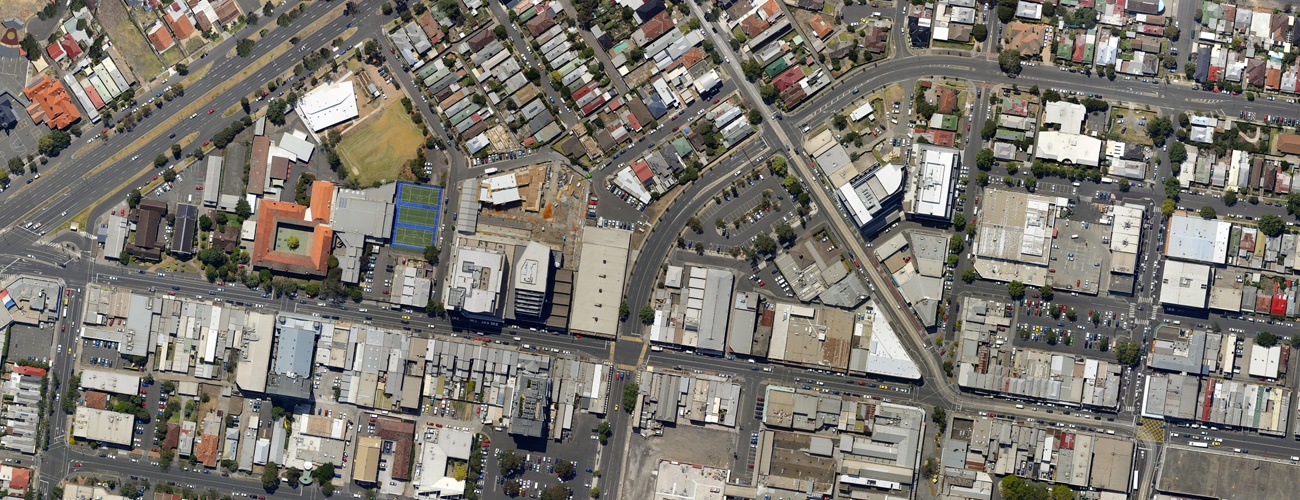Unique Lane-Based Analysis of Intersections and Networks
SIDRA INTERSECTION is the only software that employs a powerful and unique lane-based model for intersections and networks.
Realistic traffic analysis of closely spaced intersections requires modelling of driver lane use behaviour. This is lacking in software that use traffic modelling based on lane groups.
SIDRA INTERSECTION is a unique lane-based model that can identify backward spread of congestion, midblock lane changes and unequal approach lane use at closely-spaced intersections.
Capacity and performance results presented in detailed output reports and graphical displays provided by SIDRA INTERSECTION help you in assessing the accuracy of your intersection and network models.
Lane use of traffic is a fundamental factor affecting the model estimates of capacity and level of service, delay, queue length, stop rate, fuel consumption and emissions, travel time and network efficiency as well as signal timing results.
SIDRA for HCM
SIDRA complements the Highway Capacity Manual (HCM) as a lane-based intersection and network analysis tool. Unlike other software packages, the SIDRA HCM Setup does not claim to be a simple replication of the HCM procedures. Instead, it offers various extensions on the capabilities HCM offers.
Power of analytical modelling for best roundabout design
SIDRA INTERSECTION is the most advanced software for roundabouts and Version 9 includes many new powerful model features.
Most widely used software tool in the USA
The most widely used software tool in the USA for roundabout capacity and performance analysis.
Powerful Signal Timing Analysis
Signal timing analysis methods in SIDRA INTERSECTION cover an extensive area of application and is based on strong research foundations.
Signal Platoon Movements
SIDRA INTERSECTION uses lane-based second-by-second arrival and departure flow patterns to accurately analyse coordinated signal systems and Common Control Groups.
Analysis of simple to complex Intersections
SIDRA INTERSECTION can model simple to complex road traffic facilities with ease and efficiency.
Diverse Movement Classes
Movement Classes can be allocated to different lanes, lane segments and signal phases, providing a unique method for modelling of Bus Priority Lanes, Bicycle Lanes, and so on.
Lane Movements
Lane Movements are used to model the blockage of upstream lanes depending on lane choices of movements from approach lanes to exit lanes.
Pedestrians
SIDRA INTERSECTION includes extensive treatment of signalised and unsignalised (zebra) pedestrian crossings at intersections and midblock locations.
Routes
Routes can be defined in a very flexible way for travel performance results and signal offset calculations.
Site, Network & Route Outputs
Various output reports and displays are available in SIDRA INTERSECTION 9.
SIDRA for Environmental Analysis
Environmental assessment in traffic management, design, operations and planning can be conducted using models to estimate fuel consumption and pollutant emissions as a function of traffic conditions.
Fuel consumption and emission models
Environmental impacts of proposed traffic design, operations and planning schemes can be assessed using fuel consumption and emission models (CO2, CO, HC, NOx).
SIDRA MODEL Summary
Read a summary of SI-9's powerful SIDRA Model features that allows all intersection types – signals, roundabouts, sign control and pedestrian crossings in one network.
System Requirements
Read about the software requirements for SIDRA INTERSECTION 9.
